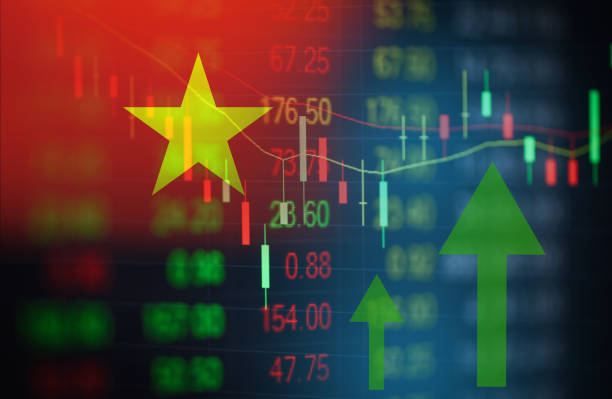Viet Nam has been a development success story. Economic reforms since the launch of ĐổiMới in 1986, coupled with beneficial global trends, have helped propel Viet Nam from being one of the world’s poorest nations to a middle-income economy in one generation. Between 2002 and 2021, GDP per capita increased 3.6 times, reaching almost US$3,700. Poverty rates (US$3.65/day, 2017 PPP) declined from 14 in 2010 to 3.8 percent in 2020.Viet Nam has worked to join the group of world’s 40 largest economies and become one of the world’s 20 leading economies in terms of trade, with a total trade value reaching over 732 billion USD in 2022.
Thanks to its solid foundations, the economy has proven resilient through different crises. GDP growth in 2022 was 8% and is expected to be 6.3% in 2023 despite many challenges to regional and global economy. Viet Nam’s economic growth is expected to rebound to 6.5% in 2024 as domestic inflation could subside from 2024 onwards. This will be further supported by the accelerating recovery of its main export markets (U.S., Eurozone, and China).
Growing at 2.5 to 3.5 percent per year over the past three decades, the agriculture sector has supported economic growth and ensured food security. It contributed 14 percent of GDP and 38 percent of employment in 2020 while earning more than US$48 billion in export revenues in 2021 during the peak of the COVID-19 pandemic.
Viet Nam offers many positive lessons for other developing countries, especially with regards to eliminating hunger, accelerating job creation for individuals and households in the bottom 40% of the population by income, increasing access to quality education and health care, and building basic infrastructure to achieve universal access to electricity and clean water.
Health outcomes have improved along with rising living standards. Infant mortality rates fell from 32.6 per 1,000 live births in 1993 to 16.7 in 2020. Life expectancy rose from 70.5 to 75.5 years between 1990 and 2020. Viet Nam’s universal health coverage index is at 73—higher than regional and global averages—with 87 percent of the population covered by the national health insurance scheme. Over the last 30 years of implementing epidemic prevention and control efforts, Viet Nam has built up a capacity to monitor, detect, diagnose, and identify diseases and respond quickly and effectively. The country’s capacity to prevent dangerous and emerging diseases has improved, as has available treatment. Preparations for coping with dangerous diseases have also been put in place. As a result, many dangerous epidemics have been controlled, repelled, and eradicated, such as smallpox in 1978, polio in 2000, and neonatal tetanus in 2005.
Viet Nam’s average duration of (learning-adjusted) schooling is 10.2 years, second only to Singapore among the Association of Southeast Asian Nations countries. Its human capital index is 0.69 out of a maximum of one, the highest among lower middle-income economies. Its higher education sector ranked 68/196 in the world in 2019, while three Vietnamese universities were in the top 1,000 best globally in the same year.
Access to infrastructure services has increased dramatically. As of 2019, 99.4 percent of the population used electricity as their main source of lighting, up from just 14 percent in 1993. Access to clean water in rural areas has also improved—up from 17 percent in 1993 to 51 percent in 2020.Unemployment in cities fell from 4.5 per cent in 2010 to 3 per cent in 2020. From 2001 to 2006, the country created more than 8 million jobs. The rate of trained workers increased from 40 per cent in 2010 to 65 per cent in 2020.
Viet Nam has grown bolder in its development aspirations, aiming to become a developed high-income country by 2045. To achieve this goal, the economy would have to grow at an annual average rate of 5.9% per capita for the next 25 years. Viet Nam also aims to grow in a greener, more inclusive way, and has committed to reducing methane emissions by 30 percent and halting deforestation by 2030 while achieving net zero carbon emissions by 2050.
Notably, Viet Nam has many times been elected to international organizations, institutions and mechanisms such as a non-permanent member of the United Nations Security Council (2 terms), the UNESCO General Assembly, and the Human Rights Council. Viet Nam has several times hosted major international conferences such as APEC, ASEAN, ASEM, the International Francophone Organization; and has been elected to the United Nations Commission on International Trade Law (UNCITRAL). Viet Nam has also actively and effectively participated in UN peacekeeping activities and received international praise. In a recent statement, United Nations Secretary-General Antonio Guterres highly appreciated Viet Nam’s participation in international issues including climate change response and international peacekeeping operations.
Viet Nam has trade ties with more than 220 partners and cooperation with 500 international organizations, has signed bilateral trade agreements including nearly 60 investment encouragement and protection agreements and 17 free trade agreements. Viet Nam has signed more than 80 multilateral international treaties, and has joined 70 organizations and multilateral and global forums. Viet Nam’s GDP is expected to reach 433 billion USD in 2025 and 687 billion USD in 2030. This means Viet Nam’s GDP per capita will increase sharply to 4,280 USD in 2025 and 6,600 USD in 2030. Bloomberg recently published an article titled “Viet Nam can become the next start-up hub in Asia”.
These objective, scientific and practical judgments about Viet Nam’s bright future by reputable international organizations and institutions demonstrate that Viet Nam has pursued correct strategies and orientations.

